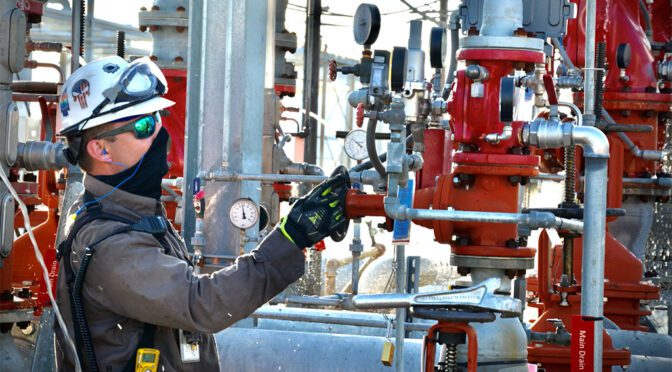Overview of Environmental Health and Safety Practices
An Environmental Health and Safety (EHS) policy is fundamental for organizations, focusing on preventing workplace injuries, minimizing environmental impact, and ensuring cost-effective management of hazardous materials. EHS teams enforce safety standards, conduct hazard assessments, provide training, and develop emergency response plans.
Organizations play a pivotal role by understanding and adhering to EHS standards, fostering a secure workplace, and demonstrating corporate responsibility through environmental conservation and sustainable practices, ultimately benefiting individuals, ecosystems, and the business itself. Compliance with legal frameworks is paramount for ensuring a safe and healthy work environment.
Organizational Roles In The EHS Framework

Organizations bear the crucial responsibility of comprehending their roles in addressing environmental concerns. This involves implementing and practicing environmental policies, devising strategies to meet targets, and fostering best practices through effective tools and systems for performance monitoring. Additionally, organizations must implement strategies to ensure strict compliance with environmental legislation.
Full adherence to Environmental Health and Safety (EHS) standards not only safeguards people but also protects the environment and fortifies businesses. It reflects a commitment to responsible corporate citizenship by mitigating environmental impact and promoting sustainable practices for the collective benefit of individuals, ecosystems, and the business itself.
Things To Understand EHS Practice Courses

The Environmental Health and Safety (EHS) courses listed cover a broad spectrum of topics crucial for professionals working in safety and environmental fields. The Certified Environmental Specialist training provides an intensive overview of EPA regulations, essential for those handling projects with potential environmental or public risks. The Resource Conservation and Recovery Act (RCRA) course focuses on managing hazardous waste throughout its lifecycle, emphasizing regulations for generators, containers, and Hazardous Waste Management Plans. Additional courses include;
- the California 8-Hour RCRA refresher
- Mold Inspector Certification
- Specialized training on identifying and handling hazardous wastes under RCRA regulations
- Stormwater discharges, Clean Air Act, and Clean Water Act training are also offered, providing comprehensive education on regulatory compliance and environmental stewardship
These courses collectively equip professionals with the knowledge and skills necessary for maintaining a safe, efficient, and environmentally responsible work environment.
Tips For Practicing EHS Courses

Practicing Environmental Health and Safety (EHS) courses effectively involves a strategic approach that goes beyond theoretical understanding, emphasizing practical application and a commitment to continuous improvement. To ensure success in passing EHS training, here are some of the tips that can be followed:
- Engage in Practical Training: EHS courses often include hands-on training and simulations to enhance practical skills. Actively participating in these exercises allows individuals to apply theoretical knowledge in real-world scenarios. Practical experience reinforces learning and prepares participants to address challenges effectively.
- Stay Informed about Industry Trends: Environmental health and safety practices are continually evolving to align with industry advancements and emerging risks. Regularly updating knowledge on the latest trends, technologies, and best practices ensures that individuals remain at the forefront of EHS developments. This commitment to continuous learning is integral to mastering the subject.
- Seek Professional Certifications: Acquiring professional certifications in environmental health and safety not only validates one’s expertise but also demonstrates a commitment to excellence. Certifications such as the Occupational Safety and Health Administration (OSHA) certifications or the International Organization for Standardization (ISO) certifications can enhance credibility and open doors to career advancement.
- Promote a Culture of Safety: Mastering EHS goes beyond individual knowledge; it involves fostering a culture of safety within an organization. Encouraging open communication, emphasizing the importance of safety protocols, and involving employees in safety initiatives contribute to a collective commitment to health and well-being.
EHS Training Requirements And Course Content

EHS Training is essential, driven by the federal government’s creation of the Environmental Protection Agency (EPA) to safeguard the environment. Industries like construction, demolition, and oil and gas require specific training to prevent negative environmental impacts. Training is composed of; spill prevention, hazardous material storage, and cleanup procedures.
- The final exam is required to be passed with a 70% score
- Completion within months of employment is crucial, with heavy penalties for non-compliance.
- Without certification, working legally in the United States is prohibited.
Considering the stringent requirements, there is a need for effective training from a quality platform to ensure comprehensive preparation for industry-specific environmental health and safety challenges.
Why Do EHS Practices Matter?
Getting trained for EHS and Implementing Environmental Health and Safety (EHS) practices is important for employees and organizations to operate responsibly, creating sustainability while minimizing the risk of harm to individuals and the environment. Here are some of the benefits for the organizations and employees for implementing and getting trained for EHS:
The essential component of workforce safety:
Effective job safety training is crucial, ensuring that workers understand the proper procedures and precautions before starting tasks. Whether operating a forklift or dealing with a chemical spill, knowing protocols for prevention, response, and communication is vital. Without such training, employees jeopardize their safety and that of others, highlighting the importance of comprehensive workplace safety education.
OSHA requirement:
Organizations are legally required to train employees on safety, with a duty to certify and provide evidence of training to OSHA. Continuous education is essential to keep workers informed about regulatory changes, ensuring compliance, such as guidelines for using facemasks during viral outbreaks.
Mitigation of risks:
EHS enables the identification and mitigation of potential hazards, preventing them from escalating into more significant problems. This not only safeguards the well-being of employees but also protects the environment from potential damage. The emphasis on EHS creates increased employee involvement, creating a culture of shared responsibility.
Compliance with regulatory requirements:
Adherence to EHS practices ensures compliance with regulatory requirements, instilling confidence in effectively responding to accidents and emergencies. This, in turn, minimizes potential liabilities, contributing to overall risk reduction. Additionally, organizations benefit from heightened morale among employees, further enhancing productivity and commitment.
Reduction in damages:
EHS initiatives contribute to a reduced environmental impact, emphasizing efficient use of natural resources and decreased waste output. The long-term advantages extend to cost savings, as organizations operating under robust EHS frameworks tend to incur fewer expenses related to accidents, environmental damage, and regulatory non-compliance. In essence, EHS practices form a cornerstone for responsible and sustainable business operations with far-reaching positive outcomes.
Concluding Aspects Of EHSP
Practicing environmental health and safety courses is an investment in the well-being of individuals and the sustainability of organizations. By prioritizing workplace safety, staying informed about industry trends, seeking certifications, and promoting a culture of safety, individuals can master EH&S practices. Ultimately, the adoption of these principles contributes not only to a safer and healthier work environment but also to a more sustainable and resilient future for businesses and communities alike.




